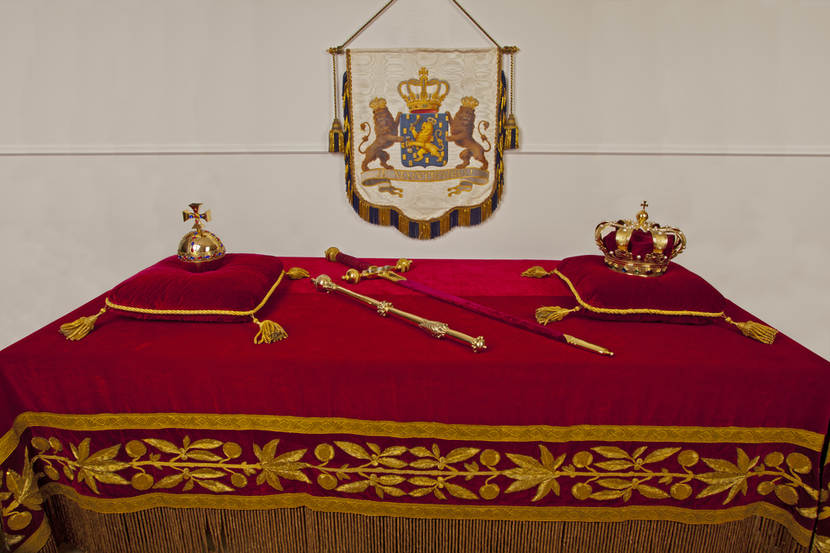Investiture
Monarchs are not crowned in the Netherlands but sworn in and invested. A new monarch assumes the royal prerogative as soon as his or her predecessor dies or abdicates. The Constitution stipulates that the new monarch must be sworn in and invested as soon as possible.
The Constitution specifies that the investiture must take place in the capital city, Amsterdam, at a public joint session of the two Houses of the States General (Parliament) – the Senate and House of Representatives. At the investiture ceremony the new monarch swears or affirms his allegiance to the Charter for the Kingdom of the Netherlands and to the Constitution.
Investiture ceremony
The investiture ceremony was first held in 1814, when the future King Willem I was sworn in as sovereign prince. Ever since, the ceremony has taken place in the Nieuwe Kerk in Amsterdam. It acquired its present form with the investiture of King Willem II in 1840. Although the investiture takes place in a church, it is not a religious ceremony; its significance is purely constitutional. Since the monarch is not crowned, during the ceremony the crown of the Netherlands is simply displayed, with the other regalia, on a special table known as the credence table.
The wording of the oath or affirmation sworn or made by the monarch to the people of the Kingdom is laid down by the Swearing-in and Investiture of the King Act.
The oath or affirmation:
‘I solemnly swear (affirm) to the people of the Kingdom that I shall constantly preserve and uphold the Charter for the Kingdom of the Netherlands and the Constitution. I swear (affirm) that I shall defend and preserve the independence and the territory of the Kingdom to the best of my ability, that I shall protect the freedom and rights of all Dutch citizens and residents, and that I shall employ all means placed at my disposal by the law to preserve and promote prosperity, as is incumbent upon a good and faithful Sovereign. So help me God! (This I solemnly affirm!)’

Regalia
The regalia symbolise the monarch’s power and dignity. They were commissioned from goldsmiths by King Willem II in 1840.
The crown
The crown symbolises the sovereignty of the Kingdom of the Netherlands and the dignity of the head of state. Since Dutch monarchs are not crowned, they never actually wear the crown.
Other regalia
As well as the crown, the other regalia are:
- the sceptre, standing for the monarch’s authority;
- the orb, standing for the monarch’s territory;
- the sword of state, standing for the monarch’s power;
- the national standard, bearing the Dutch coat of arms.
During the investiture the regalia are displayed on a special table known as the credence table, along with a copy of the Dutch Constitution and a copy of the Charter for the Kingdom of the Netherlands.